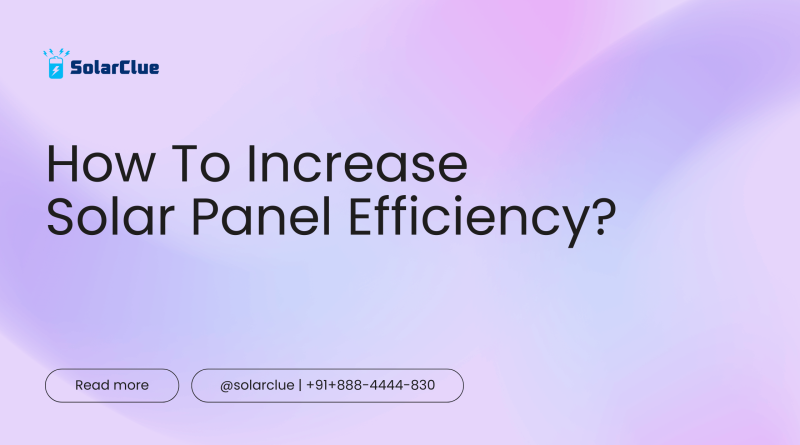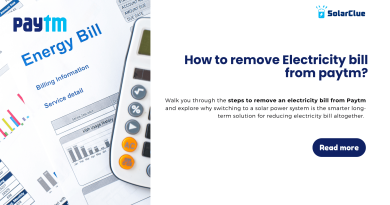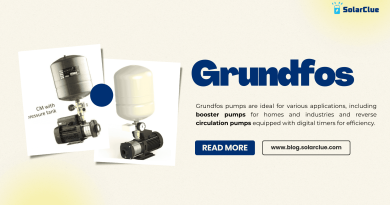How To Increase Solar Panel Efficiency?
Maximizing solar panel efficiency is crucial for enhancing energy production and achieving greater cost savings. This guide covers various factors affecting solar panel performance and provides practical tips for optimizing solar systems to increase energy output.
Table of Contents
- 1 Understanding Solar Panel Efficiency and Its Impact on Energy Production
- 1.1 Optimizing Panel Orientation and Tilt for Maximum Sunlight Exposure
- 1.1.1 Minimizing Shading and Its Effects on Solar Panel Performance
- 1.1.2 Managing Temperature to Improve Panel Efficiency
- 1.1.3 Regular Cleaning and Maintenance for Optimal Output
- 1.1.4 Exploring Advanced Solar Technologies for Efficiency Gains
- 1.1.5 Calculating Potential Energy Gains from Efficiency Improvements
- 1.1.6 The Role of Energy Storage in Maximizing Solar Utilization
- 1.2 Comparison of Efficiency Improvement Methods
- 1.1 Optimizing Panel Orientation and Tilt for Maximum Sunlight Exposure
Understanding Solar Panel Efficiency and Its Impact on Energy Production
Solar panel efficiency is the ratio of the electrical output of a solar panel to the incident energy in the form of sunlight. Higher efficiency means more electricity generation for the same amount of sunlight. Typical efficiency ranges are:
- Monocrystalline panels: 15-22%
- Polycrystalline panels: 13-16%
- Thin-film panels: 10-12%
Optimizing Panel Orientation and Tilt for Maximum Sunlight Exposure
Correct orientation and tilt are crucial for maximizing sunlight exposure. In the northern hemisphere, panels should generally face south, while in the southern hemisphere, they should face north. The optimal tilt angle varies with latitude and season. For example:
- At 30° latitude, the optimal tilt is approximately 30° in winter and 15° in summer.
- Tools like online calculators can help determine the best orientation and tilt for specific locations.
Minimizing Shading and Its Effects on Solar Panel Performance
Shading can significantly reduce solar panel output. Identifying potential sources of shading (e.g., trees, buildings, chimneys) and taking steps to minimize them is essential. Strategies include:
- Trimming trees and avoiding installation near obstructions.
- Using microinverters or power optimizers to minimize the impact of partial shading.
Managing Temperature to Improve Panel Efficiency
Solar panels operate less efficiently at higher temperatures. Managing temperature involves both passive and active cooling techniques:
Passive Cooling: Ensuring adequate ventilation around panels and spacing them to allow airflow.
Active Cooling: Implementing systems like water cooling or phase change materials to maintain optimal panel temperatures.
Selecting panels with lower temperature coefficients can also help maintain efficiency in hot climates.
Regular Cleaning and Maintenance for Optimal Output
Dust, dirt, and debris can reduce solar panel efficiency. Regular cleaning and maintenance are vital:
- Clean panels at least twice a year or more frequently in dusty areas.
- Use soft brushes or water to avoid scratching the panels.
- Regularly inspect panels for damage and ensure all connections are secure.
Exploring Advanced Solar Technologies for Efficiency Gains
1. Bifacial Panels: These panels capture sunlight on both sides, increasing energy production by up to 30%.
2. Solar Trackers: Trackers adjust the panels’ angle throughout the day to follow the sun. Single-axis trackers increase efficiency by 15-25%, while dual-axis trackers can increase it by up to 45%.
3. PERC Technology: Enhances efficiency by improving light capture and electron flow.
4. Building-Integrated Photovoltaics (BIPV): Integrates solar panels with building materials, such as solar shingles, for both functional and aesthetic benefits.
Calculating Potential Energy Gains from Efficiency Improvements
To calculate potential energy gains:
1. Determine Baseline Output: Calculate the current energy output of your system.
2. Apply Efficiency Improvements: Estimate the efficiency gains from various improvements (e.g., bifacial panels, trackers).
3. Calculate Increased Output: Use the improved efficiency percentage to calculate the new energy output.
Example: A 5kW system with a baseline efficiency of 15% produces 6,000 kWh/year. Improving efficiency to 18% would increase output to 7,200 kWh/year.
Cost-Benefit Analysis: Compare the cost of implementing efficiency improvements with the potential energy savings.
The Role of Energy Storage in Maximizing Solar Utilization
Energy storage systems, such as batteries, store excess solar energy for use during periods of low sunlight. This maximizes solar utilization and provides a consistent energy supply:
Types of Energy Storage:
Batteries: Commonly used for residential solar systems.
Thermal Storage: Stores excess energy as heat.
Calculating Storage Capacity: Based on daily energy needs and panel output.
Benefits: Reduced reliance on the grid, increased energy independence, and better management of energy production.
Comparison of Efficiency Improvement Methods
| Method | Efficiency Gain (%) | Cost (₹) | Benefits |
|---|---|---|---|
| Optimal Orientation | 10-15 | Low (cost of tools) | Increased sunlight exposure |
| Shading Mitigation | 5-20 | Varies | Reduced shading losses |
| Passive Cooling | 5-10 | Low | Lower panel temperatures |
| Active Cooling | 10-20 | High (equipment cost) | Enhanced cooling in hot climates |
| Bifacial Panels | 20-30 | Medium to High | Increased energy capture |
| Solar Trackers | 15-45 | High | Optimal sun tracking throughout the day |
| PERC Technology | 5-10 | Medium | Improved light capture and electron flow |
| Regular Cleaning | 5-15 | Low | Maintains optimal performance |
| Energy Storage | N/A | Medium to High | Maximizes solar utilization and energy independence |
Conclusion
Maximizing solar panel efficiency involves understanding and optimizing various factors, including panel orientation, shading, temperature, and maintenance. Advanced technologies like bifacial panels and solar trackers can further enhance efficiency. By implementing these strategies, homeowners can significantly increase their solar energy output and enjoy greater cost savings.
Here at SolarClue®, we offer a smart, practical, and “beautiful” solution. You will be answered for all the questions related to Solar.
We provide all kinds of brands that are the Best Solar panels in India.
If you are the one who is planning for the solar power system. Don’t hesitate to contact our team!
Looking forward to empowering you with solar energy, just like hundreds of our other clients!
FAQs
1. What is solar panel efficiency?
Solar panel efficiency is the ratio of electrical output to the incident solar energy, expressed as a percentage.
2. How can I optimize the orientation and tilt of my solar panels?
Use tools and methods to calculate the best orientation and tilt based on your geographic location and seasonal changes.
3. How does shading affect solar panel performance?
Shading can significantly reduce energy output. Mitigate shading by trimming trees and placing panels away from obstructions.
4. What are the benefits of advanced solar technologies like bifacial panels and trackers?
Bifacial panels capture sunlight on both sides, and trackers adjust the panel angle to follow the sun, both increasing energy production.
5. How can energy storage systems maximize solar utilization?
Energy storage systems store excess energy for use during low sunlight periods, reducing reliance on the grid and providing a consistent energy supply.



